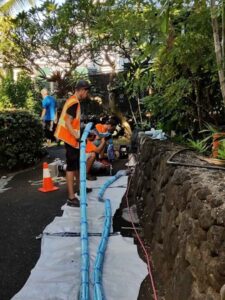Lesser Known Facts About Trenchless Pipe Lining

Trenchless pipe lining is fast becoming the preferred option for pipe restoration. Nu Flow South Pacific is a premier provider of trenchless pipe lining in Waimea, HI. Here are a few lesser-known facts about this process and why it’s becoming a popular choice for rehabilitation.
How Does It Work?
Trenchless pipe lining, otherwise known as CIPP lining, is a no-dig approach to restoring damaged pipes. The process typically begins with an inspection to assess and determine the extent of the pipe issue and whether trenchless solutions are apt. Then, a resin-soaked fiber is inserted into the pipe and lines the walls. After this resin-saturated liner cures, you are left with a new seamless pipe-within-a-pipe that can last for 50 more years.
Lesser-Known Fact #1
Trenchless pipe lining, and later on epoxy pipe lining, was invented by an agricultural engineer named Eric Wood. He needed to replace an air duct over a mushroom bed. In 1970, he found a new technique that allowed him to do just this. Wood used a resin-lined felt tube wrapped in plastic that he pulled through the duct. He then blew air through to secure the felt to the outer walls. The resin hardened, creating a new pipeline.
This invention eventually led to a more efficient method that pipe lining companies utilize today.
Lesser-Known Fact #2
Several years after Wood created this technique, the process took hold in the industry. After the patents expired in the 1990s, trenchless pipe lining took off as a widely used method for sewer and pipe repairs. By then, procedures like cast iron pipe lining were also made possible.
Trenchless Pipe Lining Today
Epoxy pipe lining is a common method used by most plumbing companies today, as it boasts numerous benefits over traditional methods. This process involves little or no digging, is more cost-effective than replacing pipes, and works much quicker.
Contact Nu Flow South to learn more about trenchless pipe lining.
Contact Nu Flow South Pacific
